The Artist
Ernst Wilhelm Nay was one of the most important artists from the second generation of Modernism.
With his œuvre, progressing from the objective to the abstract picture, he built a bridge from Expressionism to the free placement of colour, which he commanded with greatest mastery.
In Nay’s late pictures, which also once again allow figural associations, this virtuosic œuvre oscillating between objectivity and abstraction comes full circle, centred, for all its abstraction, on man.
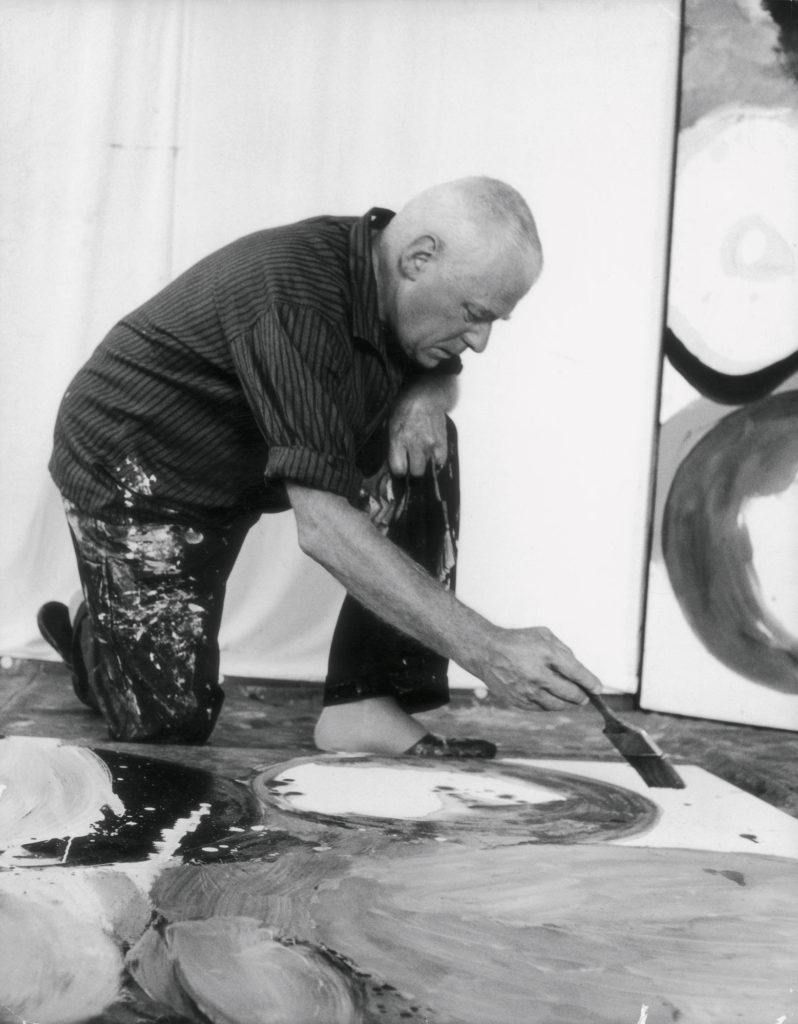
Biography
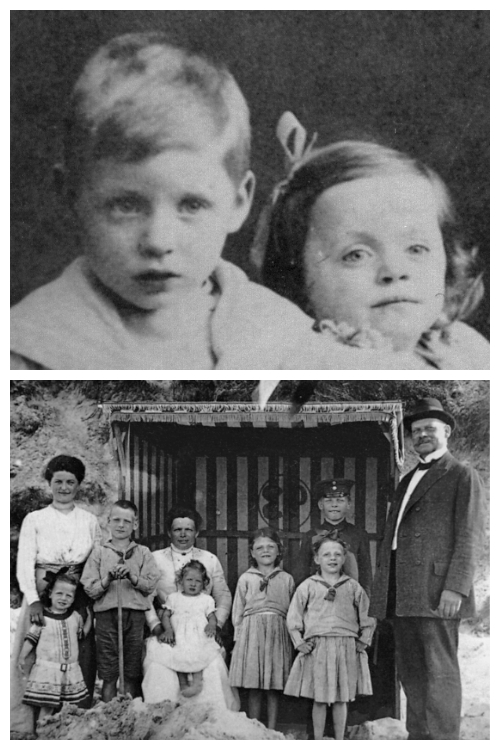
1902 – 1920
1902 Ernst Wilhelm Nay is born on June 11 in Berlin as the second of the six children of the senior civil servant Johannes Nay and his wife Elisabeth Johanna, née Westphal.
1912 Attends the humanistic gymnasium in Berlin-Steglitz.
1915 A year after his father’s death, Nay transfers to the boarding school Schulpforta in Thuringia, where he first shows an interest in modern art and experiments with painting on his own.
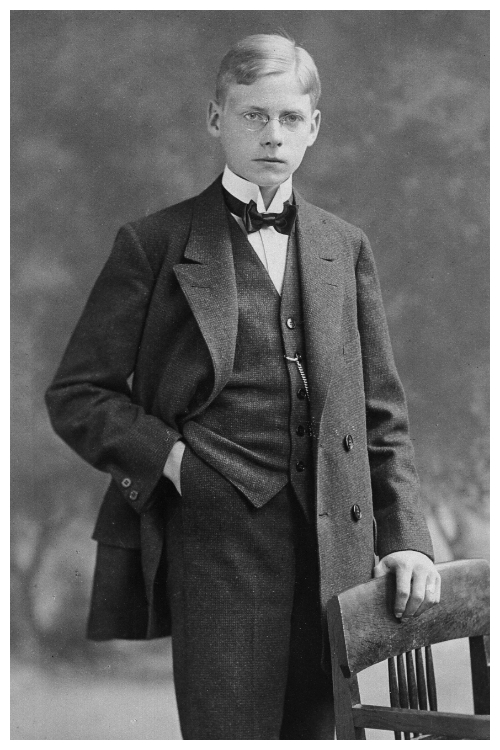
1921 – 1925
1921 After graduating, he returns to Berlin and apprentices himself to the Gsellius bookshop.
1922 Abandons his apprenticeship; paints his first self-portrait.
1923 Attends evening courses in drawing from the nude at Berlin’s Kunstgewerbemuseum, and earns his living as an assistant film architect and salesperson in the book department of the Kaufhaus des Westens.
1924 Paints portraits and landscapes. Presents himself to Karl Hofer at Berlin’s Hochschule für Bildende Künste with three of his paintings.
1925 Hofer recognizes his talent and recommends that his Portrait of Franz Reuter be included the spring exhibition of the Prussian Academy of Arts. He arranges for Nay to receive a scholarship and accepts him in his painting class.
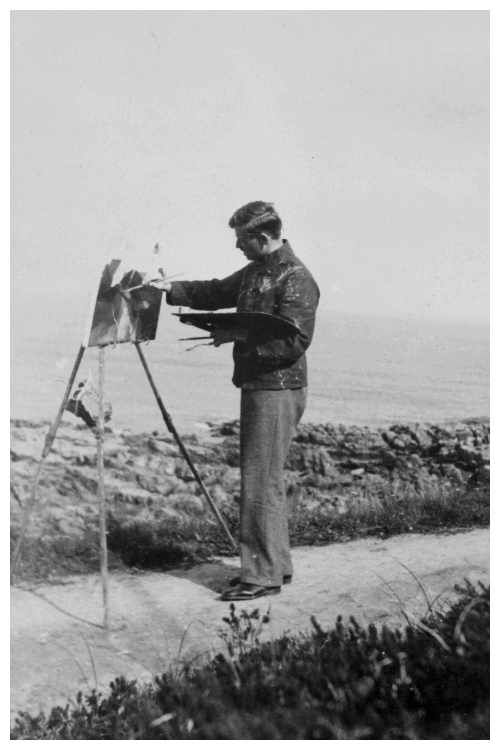
1926 – 1931
1926 Paul Westheim, publisher of the journal Das Kunstblatt, writes about him. Nay gets to know one of the models at the Hochschule, Helene (Elly) Kirchner, whom he will later marry.
1927 First sale to a museum, in Hannover. Participates in group shows in Berlin, Hannover, and Munich. Thanks to his membership in the Prussian Academy of Arts, he will receive financial support in the following years.
1928 Completes his studies under Hofer. Carl Georg Heise, director of the St. Annen-Museum and the Museum Behnhaus in Lübeck, becomes aware of him, and visits him in the painter’s Berlin atelier. For Lübeck Heise purchases the painting Still Life with Cauliflower, and he invites Nay to participate in the exhibition Ten Young German Painters. Study trip to Paris in December.
1930 Heise arranges a stay on Bornholm for him. There he produces a group of paintings from which in the following year Berlin’s Nationalgalerie will purchase the Fishermen’s Boats Next to the Harbor Breakwater.
1931 Becomes acquainted with the art critic Will Grohmann. Nay is awarded the State Prize for Painting by the Prussian Academy of Arts (for 1930), which comes with a scholarship stay at the Villa Massimo in Rome (September 1931 to June 1932). There he paints Surrealist-abstract pictures.
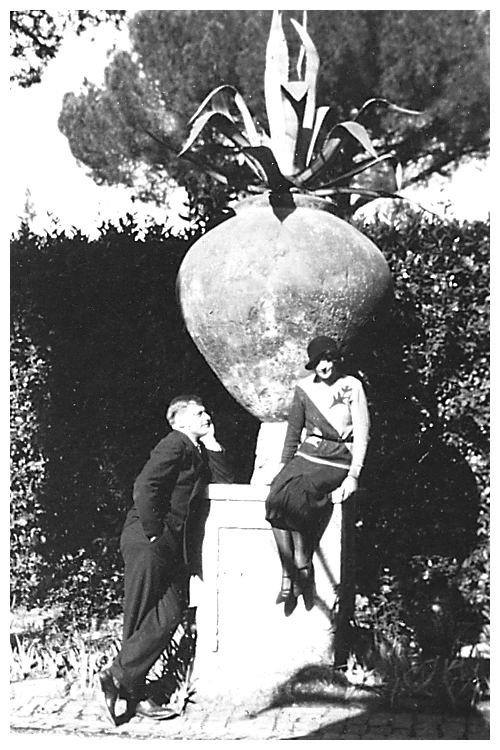
1932 – 1935
1932 Marries Helene (Elly) Kirchner. On his return to Berlin from Rome he visits the Munich art dealer Günther Franke, who will champion his art from now on. Through the art historian Ludwig Heinrich Heydenreich he is introduced to the writings of Martin Heidegger.
1933 Participates in the exhibition Living German Art in Berlin’s Alfred Flechtheim and Paul Cassirer galleries. In an attack in the National Socialist Völkischer Beobachter for February 25, 1933, one of his paintings is mocked as a “masterpiece of banality” (Lovers, 1930).
1934 Gets to know the art historians Erich Meyer, Alfred Hentzen, Werner Haftmann, and Ernst Gosebruch, the last named having been removed from his office as director of Essen’s Folkwang-Museum in 1933. Starts painting the Dunes and Fishermen pictures.
1935 Through Ernst Gosebruch he meets the Frankfurt art collector Carl Hagemann, also the collector and gallerist Hanna Bekker (also: Bekker vom Rath) in Hofheim am Taunus. Summer sojourn in the fishing village Vietzkerstrand (Pomerania) and on Darss, where he makes large-format reed-pen drawings.
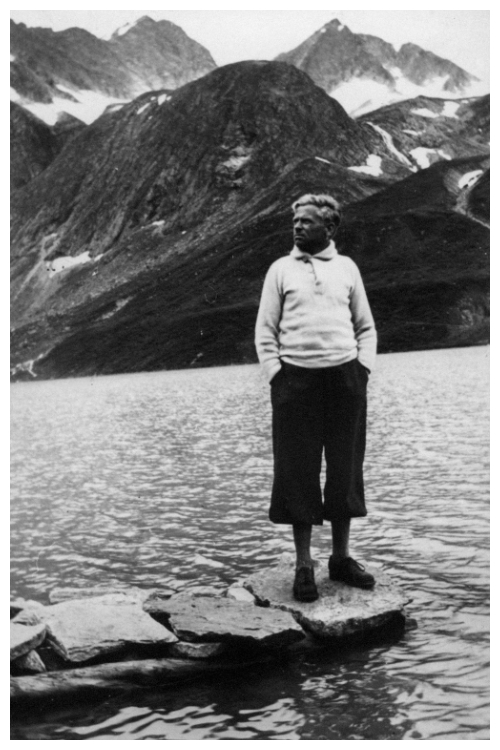
1936 – 1939
1936 Second stay in Vietzkerstrand. Takes part in the exhibition Painting and Sculpture in Germany 1936 at Hamburg’s Kunstverein. After only ten days the show is shut down by the vice president of the Reichskammer with the complaint that it promotes “decadent” art.
1937 Nay is temporarily forbidden from showing his work by the National Socialists. But because he is a member of the Reichskammer der Bildenden Künste he is allowed to secure painting materials and assistants. Two paintings of his are included in the National Socialists’ exhibition Degenerate Art, and at least ten of his works are confiscated from museum collections. Through the mediation and advocacy of the dismissed museum directors Carl Georg Heise and Ludwig Justi, Nay receives financial support from Edvard Munch and Carl Hagemann, who make it possible for him to visit Norway in the summer. Visits Munch in Skelien. Spends three months on the Lofoten Islands, painting large-format watercolours that he will later, in his Berlin atelier, turn into his Lofoten Pictures.
1938 In the winter of 1937/38 Nay exhibits his most recent watercolours at the Galerie Holst Halvorsen in Oslo. Sales allow him to make a second trip to the Lofotens. After his return to Berlin he produces a series of four woodcuts, as well as landscapes and figural paintings.
1939 In March Nay visits Hanna Bekker in Hofheim am Taunus, where he paints more watercolours. They go on joint excursions, to Frankfurt am Main and Limburg and to Wiesbaden, where Nay meets Alexej von Lawlensky. Jawlensky gives him a work from his Variations series, and Nay reciprocates with a colour woodcut from the 1938 Lofoten Prints. A trip to the Black Sea in Bulgaria is cut short by the outbreak of war.
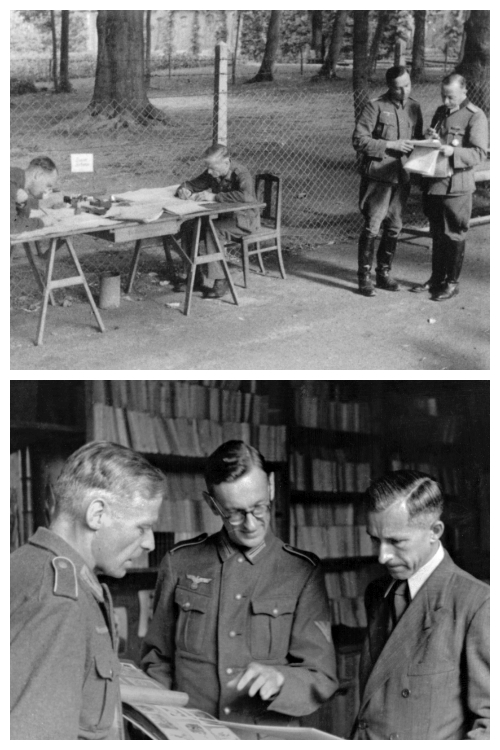
1940 – 1945
1940 Begins his military service on December 1, 1939. He is first stationed as a rifleman in a replacement infantry batallion in Schwerin an der Warthe (now Skvierzyna, Poland); in May 1940 he is sent as an infantryman first to southern France, then to Brittany. Stationed in Auray, he is able to spend his free time working on small watercolours and drawings. In Berlin during a furlough, Nay sends the majority of his pictures to his uncle in Bad Muskau in Upper Lusatia for safekeeping. Heise and Nay remain in close communication through the war years; on home leave the artist is a frequent guest of the Heises. He also keeps up intense correspondence with Hanna Bekker. Begins painting the France Pictures.
1942 Through the lawyer Hans Lühdorf, serving in Le Mans as a translator, Nay is detailed to a staff office in Le Mans as a mapmaker. Lühdorf becomes a friend and an important confidant. In Le Mans Nay also gets to know the amateur sculptor Pierre Térouanne, who places his atelier at his disposal and supplies him with painting materials.
He first produces gouaches, watercolours, and drawings, as well as a few small-format oil paintings. On an official trip to Paris, he visits galleries and museums and calls on Wassily Kandinsky in his atelier. During a furlough from the front he meets the Dresden art collector Hans Dittmayer.
1943 In Le Mans he is visited by the writer Ernst Jünger. His Berlin atelier is destroyed in a bombing raid.
1944 Nay’s unit is pulled back to the Eifel by way of Amiens.
1945 As a private first class, Nay is released from the army as early as May by the Americans. Since his apartment in Berlin is destroyed, he returns to Hofheim im Taunus. Hanna Bekker arranges for him to move into the former studio and home of the painter Ottilie W. Roederstein, not far from her villa. Among the fruitful contacts he makes are Ernst Holzinger and Clemens Weiler, directors of Frankfurt’s Städelsches Institut and the Wiesbaden Museum, respectively, as well as the writer Fritz Usinger, the art historian Ludwig Baron Döry, and the art critic Doris Schmidt. He also befriends the artists Willi Baumeister, Otto Greis, Ida Kerkovius, Otto Ritschl, and Conrad Westphal. Begins to work on the Hecate Pictures.
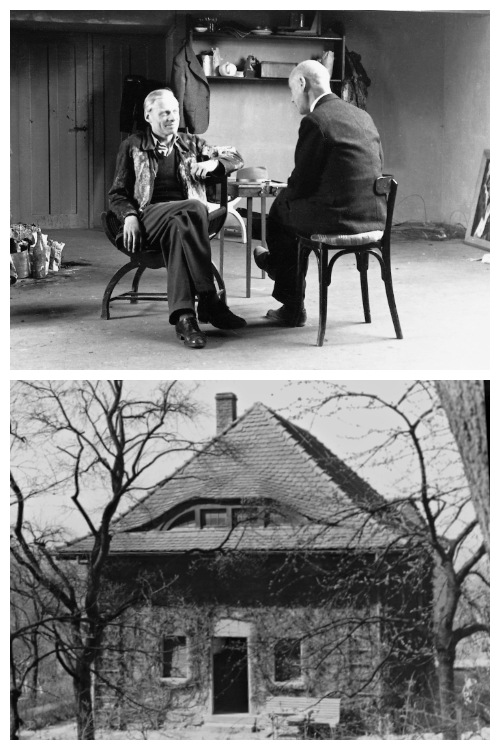
1946 – 1949
1946 First postwar exhibitions at Günther Franke’s in Munich and Gerd Rosen’s in Berlin. At Günther Franke’s he meets Elisabeth Kerschbaumer, his later wife.
1947 One-man shows at the Galerie Vömel, Düsseldorf, at Werner Rusche’s, Cologne, at the Hamburg Kunstverein in the cellar of the heavily damaged Hamburger Kunsthalle, at the Overbeck-Gesellschaft in Lübeck, and at the Galerie Franz, Berlin. Makes the acquaintance of the art collectors Bernhard Sprengel, Herbert Kurz, and Karl Ströher. First postwar purchases by German museums: the Hamburg Kunsthalle acquires the painting The Source from the Hamburg Kunstverein exhibition. The Städtische Gemäldegalerie (now Landesmuseum) Mainz organizes the exhibition New German Art, with works by Nay, and purchase his painting Seated Woman.
1948 Participates in the Venice Biennale for the first time. Gets to know the collectors Günther and Carola Peill.
1949 In the summer, in intense exploration of the technique of color lithography at Worpswede, he produces a suite of ten prints that are published by Michael Hertz, Bremen. From Worpswede Nay reports on his progress in the unfamiliar technique in great detail to Clemens Weiler, who acquires the painting Leda as well as the completed prints, for the Museum Wiesbaden. Exhibitions at the Städtische Kunsthalle Mannheim (with Fritz Winter) and at the Kunstkabinett Hanna Bekker vom Rath in Frankfurt. Starts on the Fugal Pictures. After an amicable divorce from Elly Nay, marries Elisabeth Kerschbaumer in December.
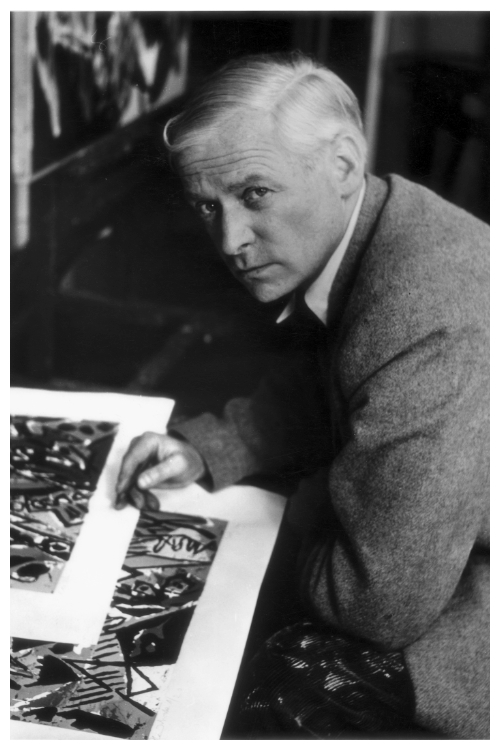
1950 – 1953
1950 The Städelsches Kunstinstitut acquires its first Nay painting, Gaea. A first retrospective at the Kestner Gesellschaft, Hannover, under the direction of Alfred Hentzen. Participates in the Venice Biennale and for the first time the Carnegie International in Pittsburgh.
1951 In Berlin he meets the sculptors Karl Hartung and Hans Uhlmann; the latter will become a close friend. In October he moves into an attic apartment on Wiethasestraße in Cologne-Braunsfeld. First participation in São Paulo’s Biennale.
1952 Begins to work on the Rhythmic Pictures. A 50th birthday retrospective is mounted at the Haus am Waldsee in Berlin. He is awarded the City of Cologne’s Art Prize as well as the Karl Ströher Prize, Darmstadt. The Hessisches Landesmuseum Darmstadt subsequently buys the painting Small Yellow Play.
1953 Together with Jean Cocteau, Gino Severini, and Hans Erni, Nay draws an abstract animated film, One Melody – Four Painters, directed by Herbert Seggelke. In the fall he teaches as a guest lecturer at the Landeskunstschule Hamburg (now the Hochschule für bildende Künste) for three months; this will be his only teaching assignment. One-man shows at the Kunstverein für die Rheinlande und Westfalen, Düsseldorf; at the Kunstverein Bremen; and at the Frankfurter Kunstverein, Steinernes Haus, Frankfurt am Main. The Hamburg Kunstverein presents the exhibition Meistermann – Nay – Winter. In the competition for the Italian Premio Lissone Nay is awarded the gold medal.
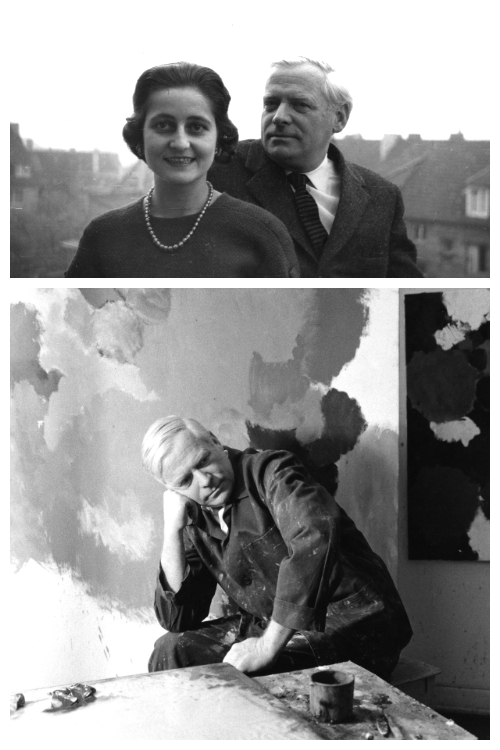
1954 – 1959
1954 Summer sojourn in Løkken, Denmark, where he produces a series of large-format watercolours. Hans Scharoun’s plan to have Nay help decorate the Kassel Theater with wall paintings fails to materialize. Nay begins painting his Disk Pictures. He is in close contact with the linguist Georg Buddruss and the ethnologist Adolf Friedrich. First show at Cologne’s Der Spiegel gallery.
1955 Nay publishes the manifesto-like text On the Gestalt Value of Color (Vom Gestaltwert der Farbe), based on his theoretical remarks from his Hamburg lectures. He is awarded the Lichtwark Prize of the Freie und Hansestadt Hamburg. Retrospectives at Hamburg’s Kunstverein and the Kestner-Gesellschaft, Hannover. Participates in documenta I in Kassel and the Biennale in São Paulo. First exhibition in the United States at the Kleemann Galleries, New York.
1956 One-man exhibition in the German Pavillion at the Venice Biennale. For the new building of the Chemical Institute at the University of Freiburg im Breisgau Nay paints a wall painting more than six meters wide (The Freiburg Picture). Named a member of the Akademie der Künste, Berlin. Awarded the Grand Prize for painting by the state of North Rhine-Westphalia. Participates in the exhibition Hundred Years of German Painting at the Tate Gallery, London.
1957 A February sojourn in Crans-sur-Sierre, where he paints more watercolours. In Paris, through the agency of the photographer Herbert List, Nay rents for two months the atelier of the photographer Florence Henri, and at Georges Visat’s prints a suite of five colour aquatints, which are then published by Michael Hertz. With the painting With Red and Black Dots, among others, participates in the exhibition German Art of the Twentieth Century at the Museum of Modern Art, New York,.
1958 Nay is represented in the exhibition 50 Ans d’Art Moderne, part of the Brussels world’s fair, Expo 58. Simultaneously, the Brussels gallery Les Contemporains presents him in a solo exhibition, from which the Musées royaux des Beaux-Arts de Belgique purchase the painting Blue and Ruby-Red.
1959 Participates in documenta II and the São Paulo Biennale. A second solo show at the Kleemann Galleries, for which the artist visits New York for the first time. Trip to Mykonos.
1966 – 1967
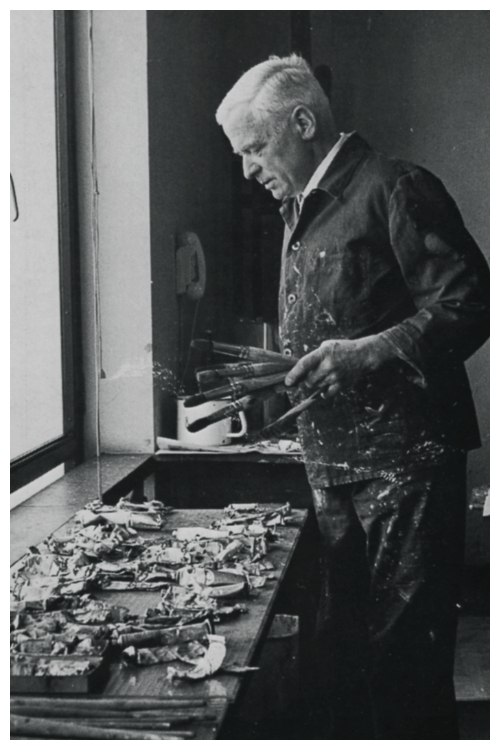
1960 – 1962
1960 Double retrospective with Willi Baumeister at the Kunsthalle Basel, curated by Arnold Rüdlinger. There Georg Schmidt purchases the painting Ontario Blue for the Kunstmuseum Basel. Werner Haftmann’s Nay monograph appears; the two men had known each other since 1929, but their friendship has intensified only during the course of the 1950s. Awarded the Guggenheim Prize (German Section), New York. Paints watercolours on Ischia in the summer. One-man show at the New London Gallery, London.
1961 Becomes acquainted with the art dealer Harry Brooks, director of the Galerie Knoedler, New York. Fritz Usinger publishes his monograph E. W. Nay.
1962 In connection with a solo exhibition at the Galerie Knoedler, New York, Nay spends January traveling about the United States, staying in New York, Washington, D.C., Buffalo, and Boston, among other cities, and visiting their museums. By way of Harry Brooks he meets the painters Robert Motherwell and Mark Rothko. A major retrospective at the Museum Folkwang, Essen, on the occasion of his 60th birthday
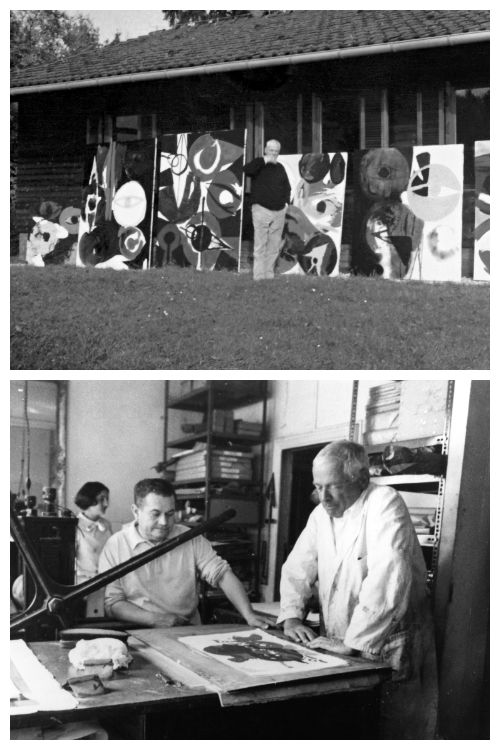
1963 – 1965
1963 A third trip to the United States (New York, Chicago, San Francisco, Los Angeles), this time with a side trip to Mexico as well, where he visits Paul Westheim in Mexico City. Solo exhibition on the 40th anniversary of the Galerie Günther Franke, Munich. Begins painting the Eye Pictures. Corresponds with the philosopher Martin Heidegger and the geologist and anthropologist Helmut de Terra.
1964 At the suggestion of Arnold Bode, he paints three large-format pictures to be hung from the ceiling at documenta III in Kassel. Triggered by Hans Platschek’s article “Nay’s Disks – A Prominent German Painter Considered More Closely” (Die Zeit, September 4, 1964), a public discussion is developed about Nay’s importance as a leading painter of German Modernism. One-man shows at Knoedler in New York and Paris. Summer sojourn on Mykonos, where he devotes himself to watercolours.
1965 Travels to Crete in the summer, and paints more watercolours. Solo exhibitions at Günther Franke’s in Munich and the Galerie Holst Halvorsen in Oslo. His suite of aquatints On Man is printed at Georges Visat’s in Paris and published in Munich by the Verlag Wolfgang Ketterer. Begins his Late Paintings.
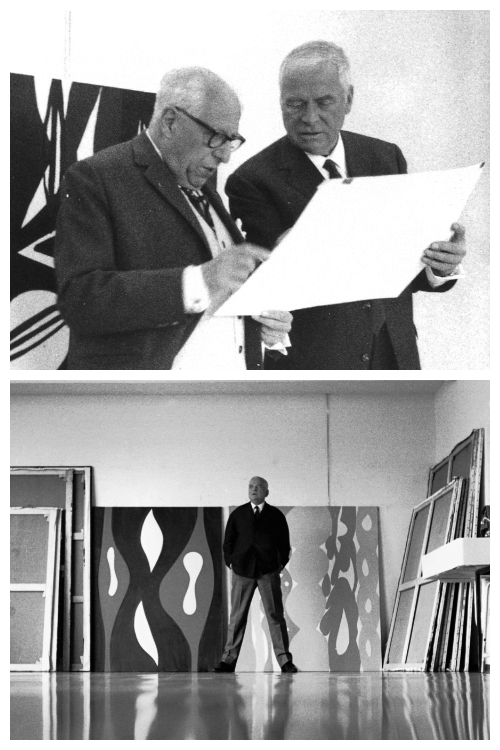
1966 Trips to Marocco, New York, Los Angeles, Hawaii, Japan, and Hong Kong. To mark Pablo Picasso’s 85th birthday, Nay publishes an essay on his art in the Süddeutsche Zeitung (25.10.1966).
1967 One-man show of recent works at the Galerie Günther Franke in Munich, at the Galerie Der Spiegel in Cologne, and at the Galerie im Erker, St. Gallen. Prints four lithographs in the Galerie im Erker. Becomes acquainted with the writer and art historian Jean Cassou, who will publish the book Nay-Watercolours in 1969. Retrospective shows at the Akademie der Künste, Berlin, the Städtische Kunsthalle Mannheim, and the Museum of the 20th Century in Vienna. In the summer, paints watercolours in Ronchi, Italy. Nay is awarded the Great Cross of Merit of the Federal Republic of Germany.
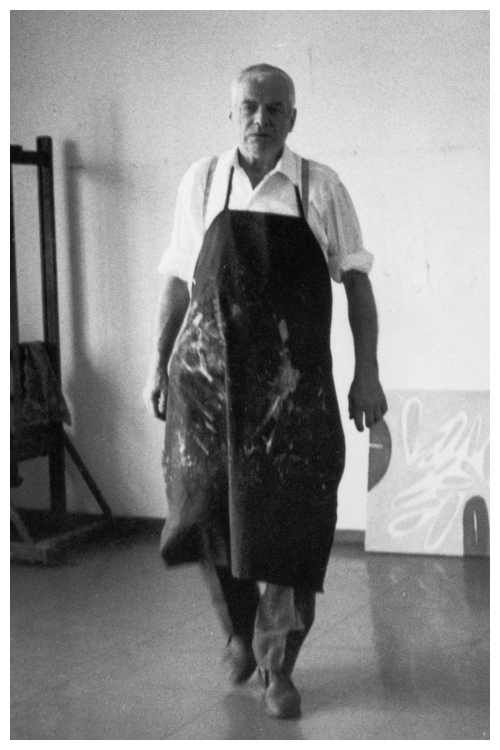
1968
1968 Makes a last trip to Berlin to see an exhibition by Hans Uhlmann. Completes designs for the Ceramic Wall Picture commissioned by the Kernforschungszentrum Karlsruhe (posthumously realized by Jörg von Manz).
On April 8 Ernst Wilhelm Nay dies of heart failure in his atelier house in Cologne.
